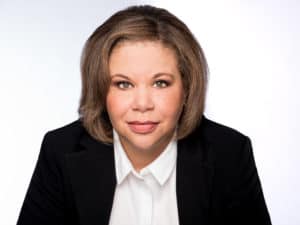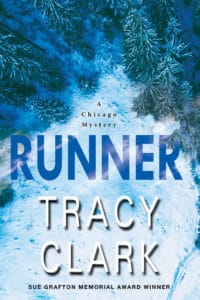“Down these mean streets a man must go…”
Yeah, thanks Chandler, I got it. I’m going to talk about those mean streets a little bit. The topic is writing setting, specifically urban setting, in crime fiction.
My five tips are below, but before we get to them, one pre-tip tip:
Turn away from the light
You’ve got to turn away, young padawan, from your city’s front room where everything’s dressed up for company, and hit the streets where the real folks live, where things aren’t so pretty or neat, where things happen, not all of it good.
I write the Cass Raines Chicago Mystery series, so Chicago’s my spot. I live here. I don’t know everything about the place, I’m constantly discovering new things, but I know a lot about it that’s cool and interesting. I at least know where to look when I’m searching for locations to set scenes.
Chicago has acquired quite the reputation for a few things – deep-dish pizza, the Chicago hotdog, brutal winters, sweltering summers, corrupt politicians, Al Capone, Lake Michigan, gun violence, gangs, Oprah. Also, that silver Cloud Gate art installation thing downtown that everybody here just refers to as The Bean. Here in Chicago, we call things like we see them. We also like things as we’ve always known them. U.S. Cellular Field? Please, it’s Sox Park! Stop it already!
But I digress. Writing urban settings. Got it. My five tips:
Know your spot
Basic info here. To write about a place you have to know it. If you live in the place you write about, you’re ahead of the game. You’ve got a feel for it and know where to hide the bodies. If you live somewhere else, research, research, research. Knowledge of place can be acquired.
Get off the main drag
You’re not writing a tourist guide. No one’s going to read 300-plus pages of you pointing out top tourist stops. If we’re using Chicago as an example–and why wouldn’t we? Great town. Great people—your crime novel is going to lose some steam if all your characters are strolling along the Mag Mile like Rothschilds. Who cares about the Prada store or the Hancock Building? Unless, of course, your bad guy chooses to dump a body there. Nice and sweet don’t usually cut it. This is Chicago! Four of our last seven governors have gone to prison for corruption. Mob enforcer Jack “Machine Gun” McGurn, allegedly (wink, wink) one of the shooters in the St. Valentine’s Massacre, got it in a bowling alley on North Milwaukee. The wise-guy assassins then added insult to injury by leaving a poem near McGurn’s body that read,
“You’ve lost your job, you’ve lost your dough,
Your jewels and cars and handsome houses,
But things could still be worse you know…
At least you haven’t lost your trousers!”
Yeah, we’re that place.
So, remember, you’re a novelist, not a rep at the visitors’ bureau, don’t stick to all the pretty things.
Dig deep
You’re off the tourist drag. Good. Now look around, take a moment to breathe, then write what you see. Your city, like my city, is populated by all kinds of people from all walks of life. Your city, like mine, is made up of neighborhoods, each one distinctive. What makes these neighborhoods tick? What do these communities look like, smell like, sound like, feel like? You’ll want to write this place so microscopically that when readers read your novel, it will almost leap off the page and grab them by the throat. Agatha Christie told us everything we needed to know about Jane Marple’s St. Mary Mead, Robert B. Parker did the same for Spenser’s Boston, and Sue Grafton did the same for Kinsey Millhone’s Santa Teresa (Santa Barbara). Break it down to the studs.
And don’t forget the founders. Every place has a beginning. South Chicago sprung up around the steel mills and the Polish, Italian and German immigrants who took up residence did so amid the acrid chemical stench spewing from massive smokestacks mere blocks from their front stoops. The stench meant good jobs for good pay. It went on like this until the mills closed and the jobs dried up. People have an impact on how a place developed back then and how it lives and breathes now. Tell us about that.
Conflict
Fiction runs on conflict. Conflict is the jet fuel in your rocket’s engine: without it you’re not going anywhere. Your setting, too, should be a source of conflict. It should challenge your characters in some interesting way, whether it’s because it’s so inhospitable a place, or because your characters are meeting it at a challenging time, hour, day, season.
Your setting cannot just lie there like a dead mackerel washed up on a shore. It should have some bite to it.
I set my latest book RUNNER in the middle of a Chicago winter so that my heroine, Cass Raines, not only has to fight the bad guys but also battle frostbite, a brutal wind chill and piles upon piles of dirty city snow. My job as the writer is to confound Cass at every turn, and I use every tool in my toolkit to do that. Setting is one of those tools. So, once you’ve selected your place, rachet it up and have your characters have to push back against it. Again, we’re not looking for a leisurely stroll, but a run for your life with an axe murderer right behind you. Less “Lost Horizon,” more “Lord of the Flies.”
What’s going on?
Part of fleshing out your setting is addressing the time and milieu in which your reader is meeting it. When is your story taking place? What’s going on in the world culturally, socially, politically? How do these influences impact where you’ve set your novel? If you’re writing contemporary crime fiction set in a big city, can you really ignore the impact of the Black Lives Matter movement? If you’re writing a police procedural, can you really not incorporate the deep-seated disconnect between police departments and the black and brown communities they are meant to serve? Bring the world in, show how it affects the place you’re writing about and the people who live there.
Bonus tip:
Warts and all. Don’t nice it up. Crime is visceral, real, gritty, dirty, often incomprehensible in its cruelty. If that fits your setting, say so. It’s not your judgment a reader’s looking for, it’s your observational skills. Crime has an impact, there are always victims. Crime hurts and it leaves scars behind. Show us that. Again, dig deep, go small. Meet these issues at the character level and tell that story.
That’s it. That’s all I’ve learned so far about writing setting, but I’m only four and a half books into this crazy writer’s game. Maybe I’ll learn more later. Until then, happy writing!
What secrets do you have for writing an urban setting? What questions do you have? Let’s talk about it on the Career Authors Facebook page!
 Tracy Clark is the author of RUNNER: A Chicago Mystery (June 29, 2021; Kensington) and three additional novels in the Cassandra Raines series. She is the winner of the 2019
Tracy Clark is the author of RUNNER: A Chicago Mystery (June 29, 2021; Kensington) and three additional novels in the Cassandra Raines series. She is the winner of the 2019 Sue Grafton Memorial Award, an Anthony and Lefty Award finalist, and her books have been shortlisted for the American Library Association’s RUSA Reading List, named a CrimeReads Best New PI Book of 2018, a Midwest Connections Pick, and a Library Journal Best Books of the Year selection. A native of Chicago, she works as an editor in the newspaper industry and roots for the Cubs, Sox, Bulls, Bears, and Blackhawks equally. She is a board member-at-large of Sisters in Crime, Chicagoland, a member of International Thriller Writers, and a Mystery Writers of America Midwest board member. She is currently a finalist for both the Agatha and Shamus Awards for Best Mystery of the Year. You can visit Tracy online here.
Sue Grafton Memorial Award, an Anthony and Lefty Award finalist, and her books have been shortlisted for the American Library Association’s RUSA Reading List, named a CrimeReads Best New PI Book of 2018, a Midwest Connections Pick, and a Library Journal Best Books of the Year selection. A native of Chicago, she works as an editor in the newspaper industry and roots for the Cubs, Sox, Bulls, Bears, and Blackhawks equally. She is a board member-at-large of Sisters in Crime, Chicagoland, a member of International Thriller Writers, and a Mystery Writers of America Midwest board member. She is currently a finalist for both the Agatha and Shamus Awards for Best Mystery of the Year. You can visit Tracy online here.





